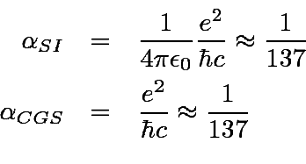The brilliant physicist Richard Feynman (1918-1988) famously thought so, saying there is a number that all theoretical physicists of worth should "worry about". He called it "one of the greatest damn mysteries of physics: a magic number that comes to us with no understanding by man".
That magic number, called the fine structure constant, is a fundamental constant, with a value which nearly equals 1/137. Or 1/137.03599913, to be precise. It is denoted by the Greek letter alpha - ?.
What's special about alpha is that it's regarded as the best example of a pure number, one that doesn't need units. It actually combines three of nature's fundamental constants - the speed of light, the electric charge carried by one electron, and the Planck's constant, as explains physicist and astrobiologist Paul Davies to Cosmos magazine. Appearing at the intersection of such key areas of physics as relativity, electromagnetism and quantum mechanics is what gives 1/137 its allure.
Physicist Laurence Eaves, a professor at the University of Nottingham, thinks the number 137 would be the one you'd signal to the aliens to indicate that we have some measure of mastery over our planet and understand quantum mechanics. The aliens would know the number as well, especially if they developed advanced sciences.
If you'd like to know the math behind fine structure constant more specifically, the way you arrive at alpha is by putting the 3 constants h,c, and e together in the equation --

As the units c, e, and h cancel each other out, the "pure" number of 137.03599913 is left behind. For historical reasons, says Professor Davies, the inverse of the equation is used 2?e2/hc = 1/137.03599913. If you're wondering what is the precise value of that fraction - it's 0.007297351.
from Why the number 137 is one of the greatest mysteries in physics
R. P. Feynman
"There is a most profound and beautiful question associated with the observed coupling constant, e, the amplitude for a real electron to emit or absorb a real photon. It is a simple number that has been experimentally determined to be close to ?0.08542455. (My physicist friends won't recognize this number, because they like to remember it as the inverse of its square: about 137.03597 with about an uncertainty of about 2 in the last decimal place. It has been a mystery ever since it was discovered more than fifty years ago, and all good theoretical physicists put this number up on their wall and worry about it.) Immediately you would like to know where this number for a coupling comes from: is it related to p or perhaps to the base of natural logarithms? Nobody knows. It's one of the greatest damn mysteries of physics: a magic number that comes to us with no understanding by man. You might say the "hand of God" wrote that number, and "we don't know how He pushed his pencil". We know what kind of a dance to do experimentally to measure this number very accurately, but we don't know what kind of dance to do on the computer to make this number come out, without putting it in secretly!" — [R. P. Feynman, QED: The Strange Theory of Light and Matter] https://en.wikipedia.org/wiki/137_(number)
133 - N = 7 * 19
134 - N = 2 * 67
135 - N = 33 * 5
136 - N = 23 * 17
137 - N is prime
138 - N = 2 * 3 * 23
139 - N is prime
140 - N = 22 * 5 * 7
141 - N = 3 * 47
